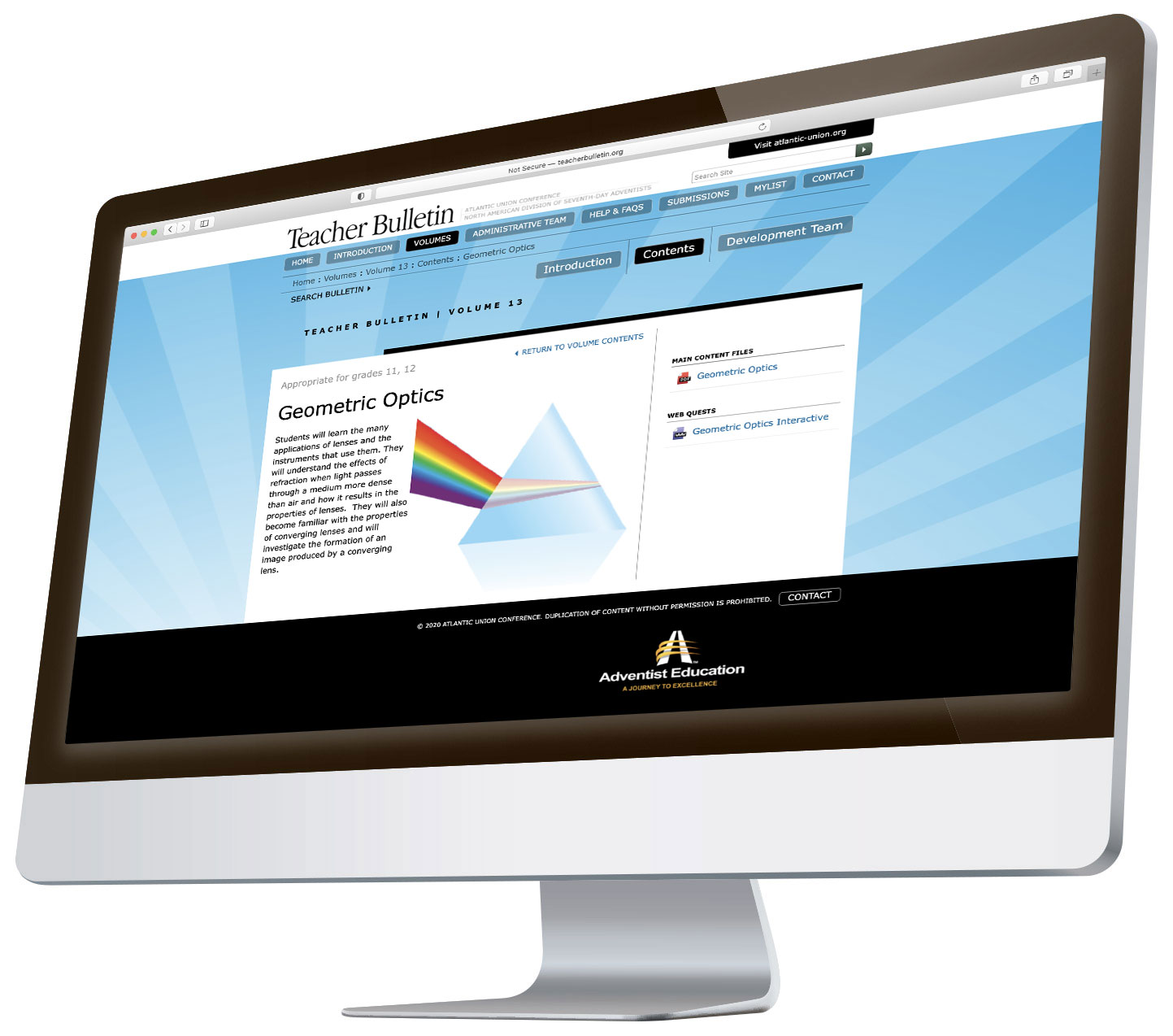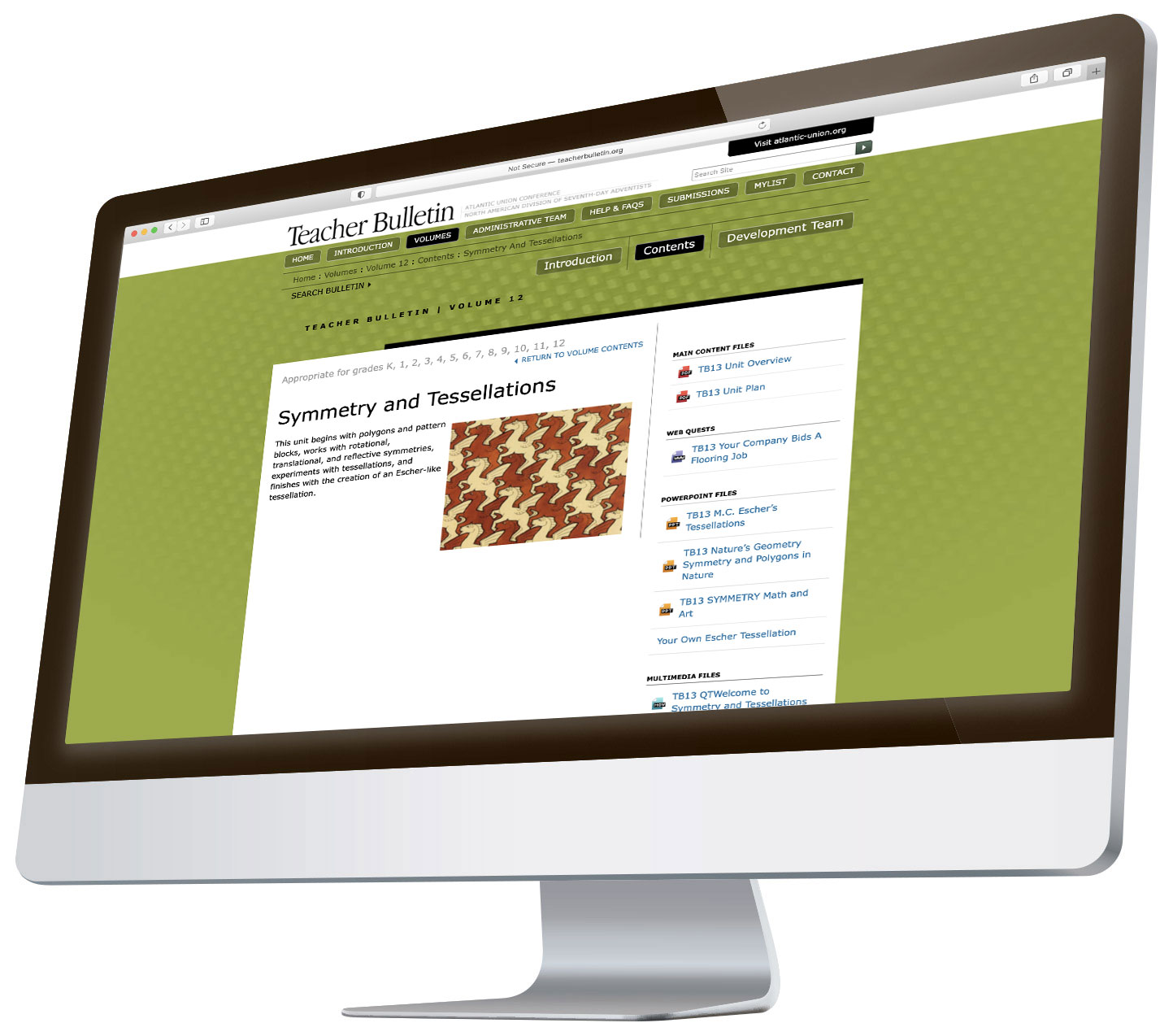Resources
Geometric Optics
Students will learn the many applications of lenses and the instruments that use them. They will understand the effects of refraction when light passes through a medium more dense than air and how it results in the properties of lenses. They will also become familiar with the properties of converging lenses and will investigate the formation of an image produced by a converging lens.

Symmetry and Tessellations
This unit begins with polygons and pattern blocks, works with rotational, translational, and reflective symmetries, experiments with tessellations, and finishes with the creation of an Escher-like tessellation.

Every resource has been carefully vetted; however, teachers are encouraged to review each one before introducing it to the classroom. Teachers should use their good judgement as to whether or not the resource aligns with the Adventist worldview and the expectations of the community.
General Resources
-
Students will learn the many applications of lenses and the instruments that use them. They will understand the effects of refraction when light passes through a medium more dense than air and how it results in the properties of lenses. They will also become familiar with the properties of converging lenses and will investigate the formation of an image produced by a converging lens.
-
This unit begins with polygons and pattern blocks, works with rotational, translational, and reflective symmetries, experiments with tessellations, and finishes with the creation of an Escher-like tessellation.
-
For most of our lives, since the moment we begin to make sense of the world, we work with rational numbers. There is no way to escape them. Whether we decide to work at the World Trade Center managing billions and trillions, become the next best thing in NASCAR, explore other planets, become an athletic trainer, work at the family business, or be a stay-at-home mom or dad, rational numbers will be part of our daily lives. So, what are rational numbers? The foundation of a strong understanding in mathematics begins and ends with the classification of numbers. Where do they belong? What are they called? Where can I use them? How do they interact with each other? These are some of the many questions we try to answer as we study mathematics.
-
Lines, Lines, Lines!!! is a unit based on the study of lines as they relate to the coordinate plane.
It explains the ins and outs of several different formulas and equations.
It guides the teachers and students in a step by step process on how to find, graph, and determine which type of lines they are and their equations.
-
This unit attempts to explain the fundamental principles that govern higher math courses such as Advanced Algebra, Geometry, Pre-Calculus, Probability & Statistics, and Calculus. Not every principle is covered, but the majority of them are. With this knowledge students will have a solid grasp of parts of math that answer the “Why?” questions — “Why do we do it that way?” “Why won’t this method work instead?” “Will this way always work?”
However, the inevitable math student question, “Why do I have to learn this?” is still up to you to answer. But here’s some help!
